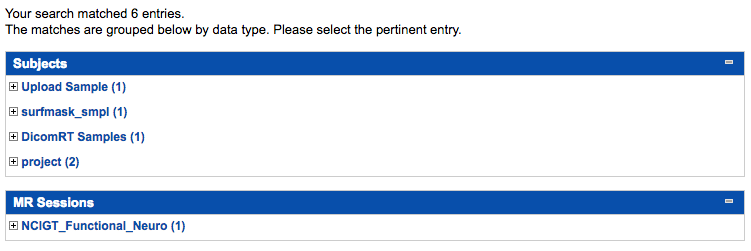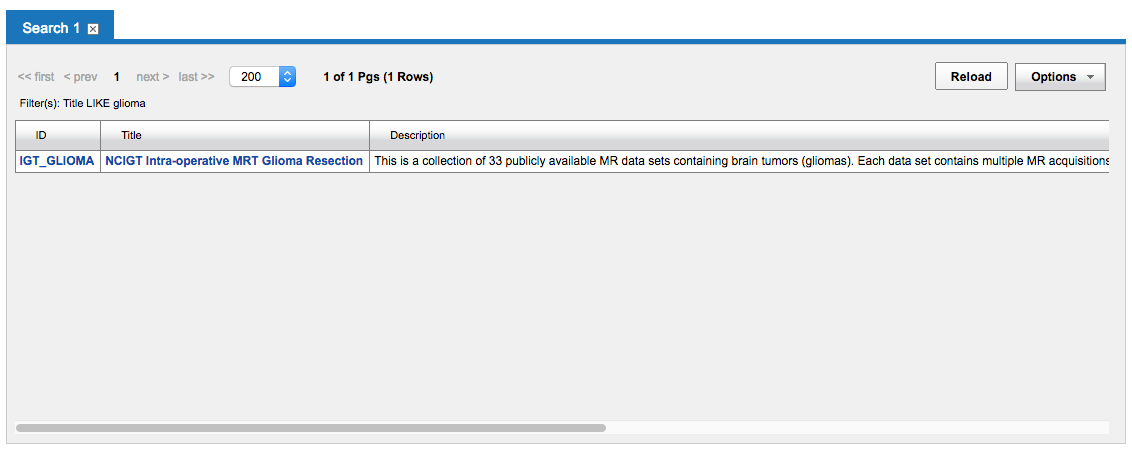Using the Standard Search

The standard search box in the top bar of the XNAT application can help you quickly find the data element you want to work on.
Many experienced XNAT users quickly adopt this as one of their favorite shortcuts for navigating their data. However, its behavior differs from the now-ubiquitous Google-style search boxes that proliferate in the web today. Here's a quick introduction to how XNAT Search works.
Accepted inputs
The standard search sends a quick query to the XNAT database, looking to match a project, subject or experiment to one of the following conditions:
ID = [entry], or
Title = [entry], or
Alias = [entry], or
Keywords LIKE [entry]
If you send an entry that finds multiple matches, you will get a disambiguation results page. For example, searching for "001" in XNAT Central yields the following results:

Standard Search Limitations
XNAT Standard Search is not a sophisticated natural language search tool. Searching for "GLIOMA" will not return any results, even though there is a publicly accessible project on XNAT Central with an ID of "IGT_GLIOMA", and the word "gliomas" in the project description. This search fails to find that project because the project ID was not equal to the search term. Refer to the conditions above.
Alternative Search Options
The standard XNAT home page contains a more detailed set of search controls, allowing you to find content by a wider range of conditions. For example, searching for "glioma" on XNAT Central using the search function on the Projects tab successfully locates the IGT_GLIOMA project.
This search interface differs from the top bar in that it produces a data table as its search result, rather than trying to take you directly to the best-fit result page. Here is the resulting format of the previous search:

